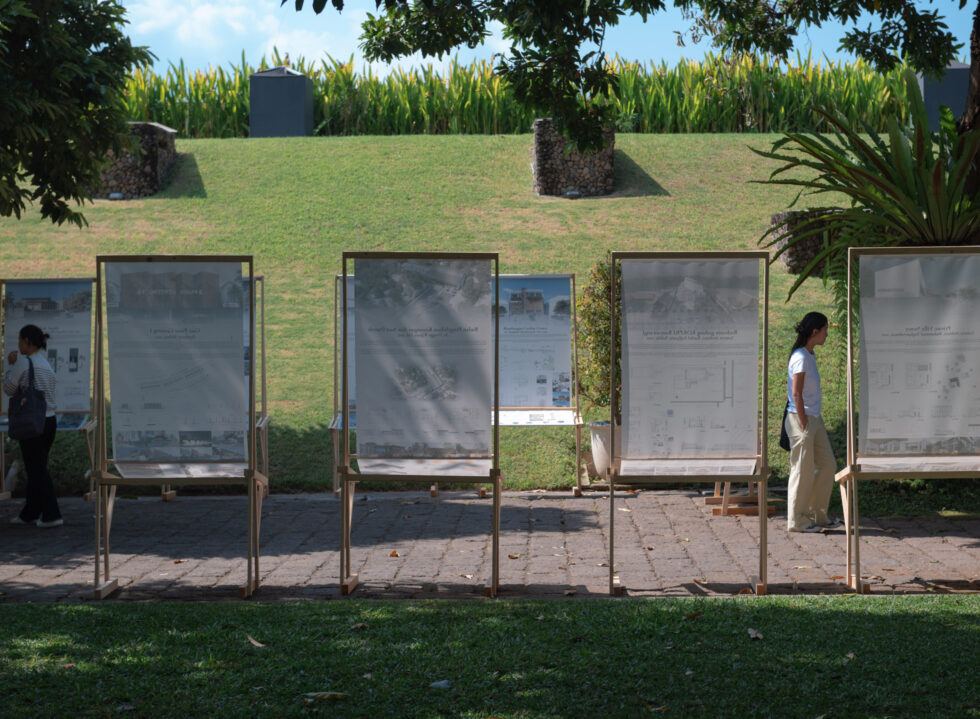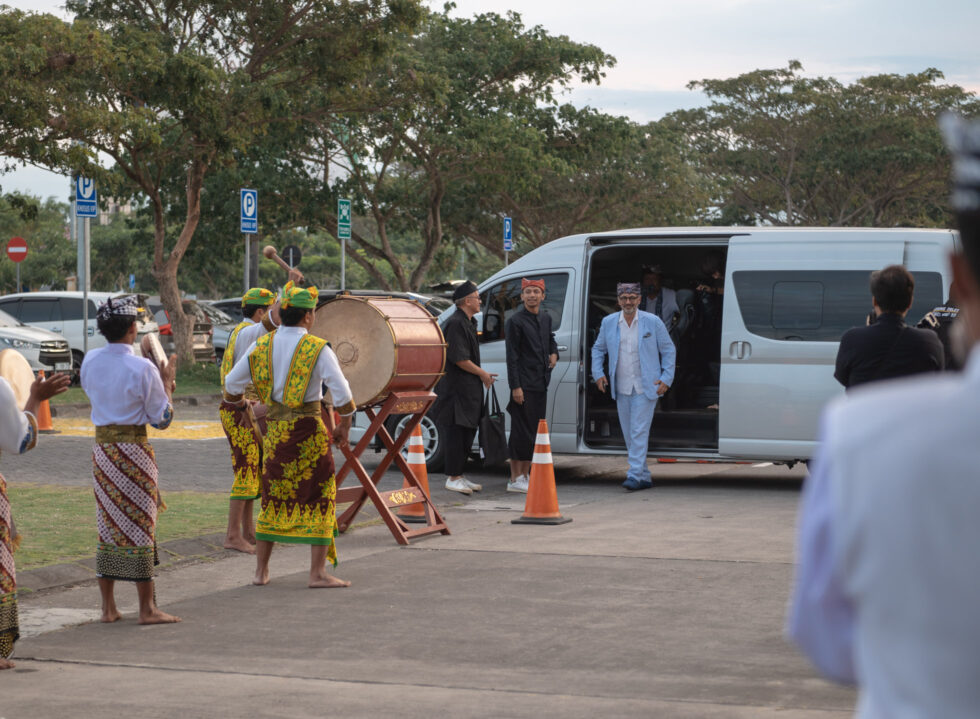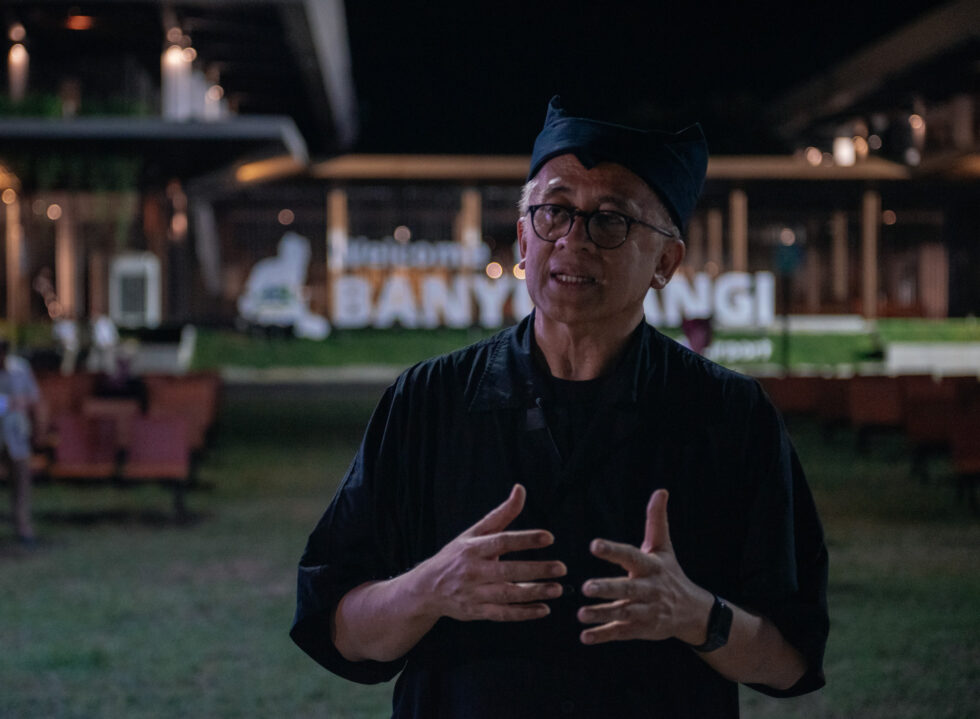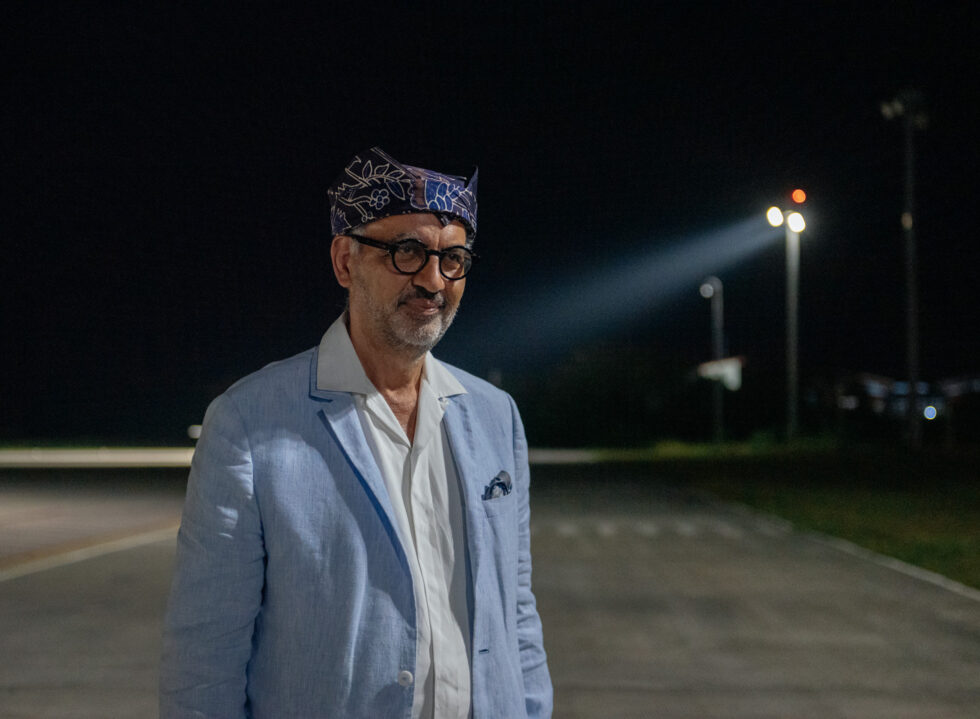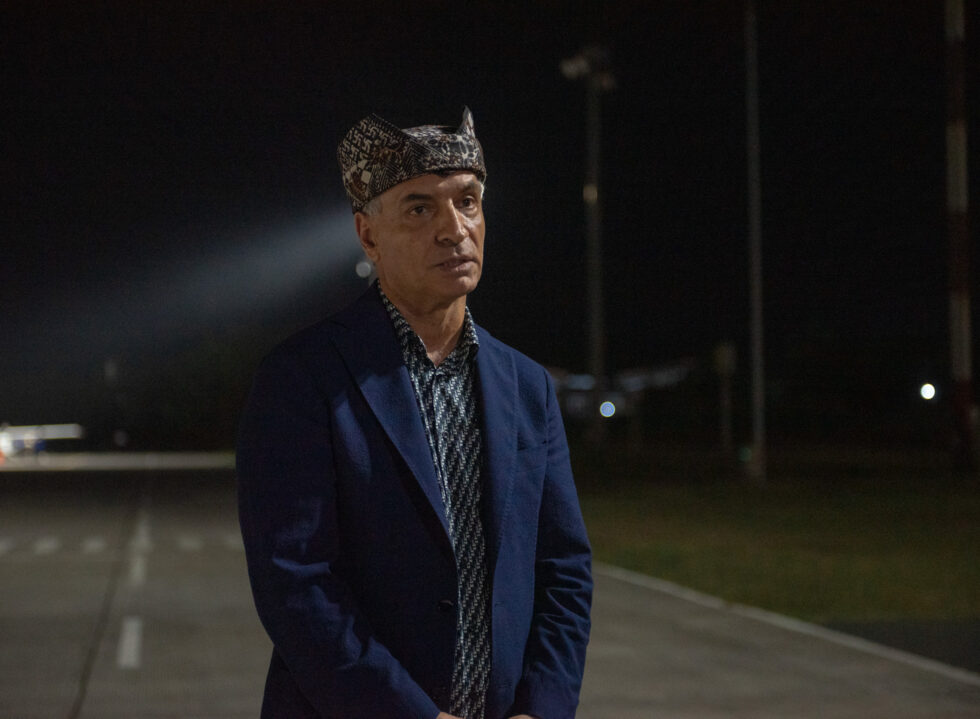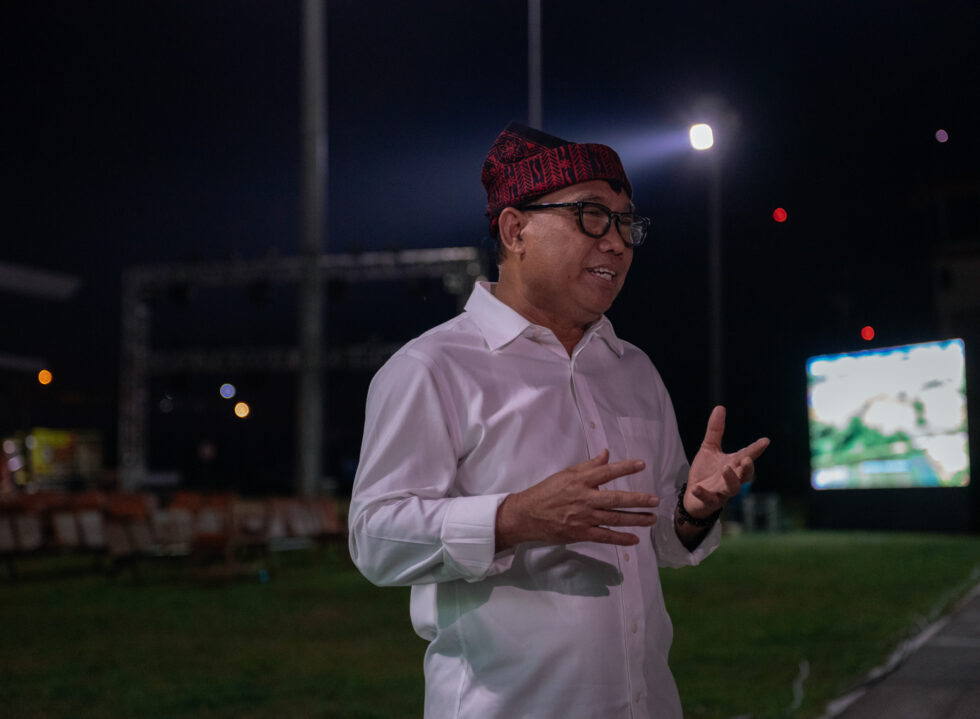Sitting at home amidst surrounding paddy fields, Banyuwangi International Airport appears camouflaged into the natural landscape with its overhanging green roofs as seen from the aeroplane’s windows. The full design slowly reveals itself as one lands and steps on the tarmac: the pitched roofs resemble traditional houses of the local Osing tribe, and from the side, the timber-framed triangular edges jut out to outline the silhouette of Udeng, the traditional headdress for men.
As seen in many of Andra Matin’s works, the lines between outdoor and indoor, building and nature, blur with ease. Recognised as Indonesia’s first green airport, the building employs vernacular design principles by using ulin wood louvres in place of walls and roofs to optimise daylight and serve as a natural cooling system.
Located at the Easternmost tip of Java island, the airport serves up to 1100 passengers daily, with plans for expansion set to increase domestic and international routes. Moving away from standardised airport design which often sees functionality dictate form, Banyuwangi International Airport shows a warmer side by grounding itself in its local roots and culture. It’s a definitive feature that Farrokh Derakhshani, Director of the Aga Khan Award for Architecture observed almost immediately upon arrival.
“One of the most important values of architecture is how a project fits in the context of that city or country and how it serves its people. The airport achieves this so thoroughly. There’s a sense of oneness between the building and the city and its surrounding landscape. You instantly get the sense of space [of being in Banyuwangi] the moment you arrive,” recalled Farrokh of one of the deciding considerations that led to the airport receiving the award back in 2022.
“We didn’t set out to make a ‘grand building’, but to extend this feeling of returning home.” – Andra Matin.
One of the longest-standing architectural awards, the Aga Khan Award has just completed its 15th award cycle (2020-2022), honouring projects that set a new standard of excellence in architecture, while also providing positive societal impact in Muslim communities. This also marks Indonesia’s first AKAA win since 1995, when Soekarno Hatta’s international and domestic airport won for the integration of landscaping as part of their terminal expansion.
“Modern and efficient in all aspects, but at home in its place, Banyuwangi may be a game-changer in airport architecture, especially considering that the Indonesian government is set to build some 300 airports in the near future,” reads the jury citation. To which, Farrokh commented, “Certain ideas work with certain scales. And the multiplicity of small-scale airports such as these, especially in a big country is very significant. It’s definitely a game changer in that regard.”
Thoughtful of the in-between experience, the outdoor waiting area is fitted with an open, mini garden where families can be seen waiting with handwritten welcome signs for the arrival of their loved ones. While on the other side, positioned before security and bag checks, a Koi carp pond imbues a sense of serenity that is not often found in a busy airport setting. “We didn’t set out to make a ‘grand building’, but to extend this feeling of returning home,” Andra Matin shared. At different times of the day, warm light filters through the wood partitions and casts soft, thin-lined silhouettes on the surfaces, an identifying mark of the architect’s shadow play.
“Although the main function is an airport, we wanted the public to feel welcome to interact with the space. One of the ways the airport accommodates that is through the viewing gallery on the second floor, where friends and families could watch their loved ones and wave goodbye up until the moment they board the plane,” shared Pak Mujiono, Banyuwangi’s Regional Secretary.
“There’s a sense of oneness between the building and the city and its surrounding landscape.” – Farrokh Derakhshani, Director of the Aga Khan Award for Architecture.
Aligned with Aga Khan’s values of awarding not just the architect, or client, but everyone involved in the project, it’s customary for celebrations to also take place back in each winning project’s originating countries. Following the official award ceremony in Muscat, the capital of the Sultanate of Osman last October, the first post-award celebration kicked off in Banyuwangi from 22 to 24 June. The three-day event was done in conjunction with the Festival Arsitektur Nusantara, bringing a lineup of exhibitions, seminars and panel discussions that gathers the nation’s top designers that have been involved in the architectural development of the city.
In Gedung Juang 45, the exhibition chronicled the creation process of the airport design which dated back to 2013. Further into the room, small city airport designs from 12 architecture studios across the archipelago were also showcased as part of an initiative that Andra Matin set out to push Indonesian airport design forward. Meanwhile, in Pendopo Sabha Swagata, architectural projects that have defined the city’s landscape, from guest houses to community spaces, are presented alongside designs from young architects from Banyuwangi (AMB).
The festivities concluded with a dinner and award ceremony on the airport’s runway. In between the traditional Gandrung dance performance which saw two hundred dancers swiftly move in detailed choreography and a bewitching live music set from Dr Peni Candra Rini (winner of the 2022 Aga Khan Music Award), commemoration awards were handed to those that played a part in building the airport.
Beaming with a mixture of pride and awe, Andra Matin shared, “It’s a great honour for Banyuwangi International Airport to receive this recognition, as it is one of the greatest barometers for architecture in the world. My hope is that this will open the doors for people to be exposed to more Indonesian architecture and its potential.”






